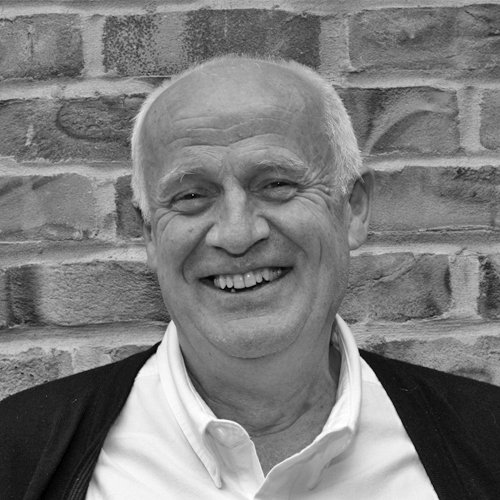
About JLE Studio
To create beautiful spaces that are thoughtfully designed
It takes a team of exceptional architects to do this. Architects who come with creative thinking, skilful design, and strategic advice.
Architects who have the ability to translate rough ideas into real spaces that inspire, excite, and delight.
And architects who have a wealth of specialist expertise so they can bring out the best of every building, no matter its age or history.
With an extensive background in interiors and high-end properties, JLE Studio is full of exceptional architects.
All ready to create a home you love.
Meet the team that make it happen
Our Partners
-

Gerard Ellis
PRINCIPAL PARTNER
Gerard trained at The Scott Sutherland School of Architecture in Aberdeen graduating with First Class Honours from the BSc course in 2008 and the MArch course in 2009. During this time he worked in Dublin on a variety of projects including Residential, Educational and Hospitality. Gerard joined Jones Lambell in 2009 and having become a Chartered Architect in 2011 has continued to develop his experience which now encompasses a number of successful high-end residential, gallery and country house projects in London, Dublin, France and the Caribbean
-

Diane Louis
JUNIOR PARTNER / BUSINESS MANAGER
Diane has over 35 years’ experience in admin, business, operations and finance management within various sectors. Having studied biology and biomedical sciences at Aston University, Birmingham, she left the scientific world behind to pursue a career in business administration and management. She’s worked in corporate, non-profit, medical, interior design and several architecture firms, which led her to her role with the team at JLE Studio.
Meet the Team
Our Founders
Meet Ron and Peter. They were the Founding Partners of JLE Studio and whilst no longer part of the team day to day, regularly consult on projects.
-
Founder (Current Consultant), B Arch RIBA
Ronald trained at the Welsh School of Architecture. His early career was spent in mainland Europe where he practised in Germany and in France before returning to the United Kingdom in 1987. Since returning he has maintained strong connections with the continent and the practice’s portfolio contains examples of projects in Germany, France, Portugal and Spain. He has wide ranging experience and has published work on 18th Century French Architecture.
-
Founder (Current Consultant), MA RCA
Peter trained at the Royal College of Art and graduated with an MA in Architecture and Environmental Design. For over thirty years he has specialised in refurbishment and new build projects of the highest quality. For twelve years he was director in charge of the architectural division of a leading design group working on a range of prestigious projects varying from private residences to 5-star plus hotels. He has overseen architectural and interior design projects in the UK, Australia, Germany, Portugal and the USA.
FAQs
-
A builder may produce excellent projects, from a kitchen extension to a whole-house transformation, but in general, the builder has little design input into the project. A builder generally follows the instructions and plans created by an architect. As architects we’re responsible for designing the space as a whole, in consultation with the owners and/or developers. The builder then follows our plans and instructions to build the project. As well as designing the space, an architect will put together the required planning applications and obtain any other consents required – for example if the project is a listed building or within an area of outstanding natural beauty AONB. We take care of all of this at JLE Studios when working on a project.
-
It all depends on the size, scope and complexity of the project. Replacing a run-down conservatory attached to an Edwardian home with a contemporary extension including floor to ceiling glazing and an additional utility room is rather different from creating a brand new home on a new plot!
Whilst working with us on a project you may need the services of …
A Kitchen Designer (to create the layout and design of the kitchen cabinetry within the new space)
An Interior Designer (flooring, paint/wallpaper, soft furnishings and window treatments)
A Quantity Surveyor (managing the construction costs and material requirements)
A Structural Engineer (ensures the design/materials specified will be suitable for the required use)
A Services Engineer (plumbing, drainage, electrics, connectivity)
We are here to help and advise on when this additional expertise is required and can recommend and manage some of our trusted partners to deliver these services.
Some compulsory services are also required on all projects, and can sometimes be included within the builders’ price and remit. These include:
Building Regulations (all new structures must adhere to Building Regulations)
CDM (Construction Design & Management Regulations)
Health & Safety Requirements
Again we can advise and make recommendations to guide you through the process and associated costs.
-
Planning permission isn’t always required. Some smaller projects can go ahead within ‘Permitted Development’ allowances, as long as the house or project isn’t a Listed Building or within a Conservation area. The home improvement section of the Government’s Planning Portal has lots of useful information for homeowners to research permissions and indeed, to make a planning application. We are always on hand to support and guide our clients through this process to make it as smooth sailing as possible.
-
It’s a statutory eight weeks from the submission of the planning application to receiving a decision from the Local Authority. However, you should also take into account the time needed to prepare the application – we recommend allowing around eight weeks, depending on the complexity of the project.
Local Authorities now prefer a Pre-Planning Application to be submitted, prior to the full application. This gives the Local Authority an opportunity to assess the application in outline and advise on the likelihood of permission being granted, before the full planning application (and all its associated costs) is submitted.
-
As the architects of a project, we would obtain quotes from different companies, [sometimes these are companies we have worked and partnered with before on previous projects]. We would then discuss and advise as to the best choices.
Possible surveys required could be:
A measured building survey (electronic drawings to provide precise measurements)
A drainage survey (to assess the condition of existing drains, particularly if an extension or new landscaping is required)
An asbestos survey (to find if existing structures that may need to be removed contain asbestos)
A geotechnical survey (if a new basement construction is part of the project)
-
In general, architects’ charges are based on a percentage of the builders' costs, and are charged in stages throughout the project. The fee is based on the final construction cost and not the builder's estimate. The Royal Institute of British Architects (RIBA) advises 15% but this can vary, again, depending on the individual project. The percentage fee is also applied to additional work that arises during construction.
-
This is a very difficult question, as there are so many variables … for example a change of mind on something that has structural significance at a certain point, which may mean adjusting several other elements of the project. In general, it usually depends on the overall size and complexity of the project. Time is needed to obtain the required permissions, for the proposals to be drawn up, and for the required experts and tradespeople to be available. But, on average, we allow …
Planning Permission to be obtained – around three months
Drawings for the builder to work to – around one to three months
Construction – allow six months to one year – depending on the size and scope of the project
-
This very much depends on what you want to achieve. Many of our clients have a ‘ballpark’ figure in mind, and at our initial walk-through meetings we are able to advise what is achievable within this budget or provide guidance on what budget would be needed to bring our joint vision to life.
-
As much or as little as you want! We find that many of our clients are focussed on the ‘finishes’, and are happy to let us as their architects deal with everything else. Many of our clients have the assistance of an Interior Designer, some bring a Kitchen Designer on board from the beginning, especially if the kitchen space is brand new, others lean on us to advise where additional expertise would be beneficial and we can work with our partners to deliver this.
-
The initial meeting usually takes place in person at the property, where we can discuss with you what you’re looking to achieve as we walk around the space. At this point the ideas will start flowing as we add in our own ideas and suggestions …
-
We recommend allowing between one to three months, depending on the size and scope of the project.
-
We like to refer to RIBA for this part as it forms a very clear structure which we are happy to talk you through in more detail during one of our consultation meetings:
Stage 1 - Pre-Design Discussion/meeting with client - No commitment
Stage 2 - Concept Design Planning Permission sought - No commitment
Stage 3 - Developed Design Detailed drawings produced - Client is committed from this stage
Stage 4 Technical Design Drawings and Tenders put out
Stage 5 Construction - On site
Stage 6 - Handover Project completed
A very useful and more detailed breakdown of services, stages and what you can expect is available here: RIBA
It may look complex and sound daunting, but remember, it’s our job to take the project from initial discussion to completion and to go through each step of the journey with you.









